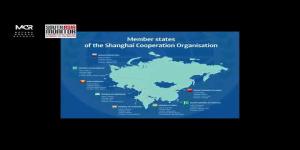When Pakistan's Nuclear Blackmail Becomes A Currency: U.S. Silence and Strategic Choices for India
India is a responsible nuclear power, the world’s fastest-growing major economy, and a civilisation-state that does not live on borrowed credibility. It has the patience to navigate provocation and the capacity to respond decisively. If Pakistan’s military flirts with Armageddon, India will respond “BrahMostically” with unmatched precision and power.

On August 9, 2025, Pakistan’s Army Chief and newly minted Field Marshal Asim Munir delivered an incendiary speech to the Pakistani diaspora in Tampa, at an event linked to US Central Command. He let out a nuclear threat warning that if Pakistan faced an existential threat from India, it would “take half the world down with us”, also he threatened Indian dams over the Indus system and the Jamnagar refinery as missile targets. It was not mere theatrics but a declaration of nuclear compellence as opposed to deterrence on the soil of a country that calls itself the guardian of global stability. It breached the UN Charter’s prohibition on threats of force, the Nuclear Taboo that has restrained atomic weapons since 1945, and the Responsibility to Protect (R2P) principle meant to avert mass atrocities.
Munir is the real power in Pakistan. The civilian government is a façade, and the Prime Minister’s silence on his speech confirms the military’s supremacy. His words signal a willingness to gamble with regional and global stability to preserve relevance. It betrays desperation. Pakistan’s economy remains fragile despite IMF infusions, deepening political unrests, and its credibility remains stained by its record of sheltering terrorists, including Osama bin Laden in Abbottabad. Nuclear blackmail becomes a currency when other levers of influence are weak.
Why Washington Remains Silent
The United States has not condemned the speech. This quietude is strategic. Pakistan matters to Washington in ways that complicate Indo–US ties. US Central Command spans over twenty countries across the Middle East, Central and South Asia, controlling critical maritime and air routes. Pakistan’s location offers enduring utility for CENTCOM ~ intelligence feeds, Afghan and Iranian surveillance, and potential staging options Washington is unwilling to lose.
That dependence has a history. In April 2025, Defence Minister Khawaja Muhammad Asif admitted Pakistan had “done dirty work for the United States” for three decades, supporting militant groups during the Soviet–Afghan war and post-9/11 operations in Afghanistan. He called it a mistake that damaged Pakistan’s standing, but the statement exposed the transactional nature of the relationship. Add to this the looming FATF and Asia-Pacific Group review on thirty-four counter-terror finance measures. Grey-list return is possible due to hawala flows to Iran and Afghanistan and foreign-exchange manipulation, yet US bailouts remain likely to preserve CENTCOM’s interests.
Threats and Their Messages
Munir repeated the “half the world down” line, leaving no ambiguity about Pakistan’s willingness to use nuclear weapons. He threatened to “wait for India to build a dam and then finish it with ten missiles” - reckless in military terms, since destroying Indus dams would unleash floods into Pakistan itself, displacing millions and crippling its economy. Yet politically it was a calculated play to hardliners. and that economic and environmental vulnerabilities are on his list.
Naming the Jamnagar refinery, a civilian economic powerhouse, is asymmetric warfare aimed at rattling markets but Indian investors remain intact in confidence. His analogy comparing India to a shining Mercedes and Pakistan to a “dump truck” full of gravel implied that in a collision, Pakistan could be self-destructive.
The audience was wider than India. The threat to US and Western policymakers was unfiltered, raising the spectre of nuclear war in South Asia to pressurise Washington and European capitals to restrain India in any crisis. For the Pakistani diaspora, it was a performance steeped in nationalist and religious rhetoric, reinforcing the army’s image as guardian of the nation. His praise of Donald Trump for “peace-making” during Operation Sindoor was a bid for political capital in Washington.
Doctrinal and Geopolitical Undercurrents
Pakistan’s doctrine of “full-spectrum deterrence” sets a low threshold. Munir lowered it further. It is compellence vs. deterrence. The asymmetric posturing seeks to offset India’s conventional superiority but would invite overwhelming retaliation.
Washington’s silence reflects a broader pattern of double standards. The Indo-Pakistan hyphenation, though muted, resurfaces when US policymakers weigh Pakistan’s utility against India’s value. Even as India faces fifty-percent US tariffs on Russian oil imports, the US recoils to China. The US continues importing Russian uranium, palladium, and fertilisers and EU oil and gas despite sanctions, while extending trade truces to Beijing to avoid Taiwan-linked escalation. Strategic convenience overrides consistent enforcement.
The lack of global reaction to Munir’s threats marks erosion of both R2P and the nuclear taboo. Realpolitik fatigue from Ukraine and Gaza has left major powers risk-averse in confronting nuclear armed states. For India, the challenge is compounded by the US hedging via CENTCOM, China tightening its CPEC encirclement, Turkey expanding defence ties with Pakistan, all spurring to slow India’s rise.
India’s Strategic Response
India’s answer must be integrated and proactive. Diplomatically, it should push the UN Security Council to treat nuclear threats as violations warranting sanction, while building a coalition through QUAD+, France, Gulf states, Israel and Japan to insulate Pakistan. Militarily, India must keep its nuclear triad credible, invest in directed-energy weapons, hypersonic systems, and space-based ISR, and develop cyber-nuclear deterrence to counter asymmetric threats.
Economically, hardening critical assets – energy hubs, corporate headquarters, dams is essential, with flood control and dam security elevated to national security priorities. Energy diversification can blunt tariff leverage and safeguard strategic autonomy.
At the core, India must evolve “Strategic Autonomy 2.0” – fusing military and economic self-reliance with agile diplomacy that converts asymmetries into leverage. This means engaging constructively with Washington where interests align like the elements in the Comprehensive Strategic Partnership.
India is a responsible nuclear power, the world’s fastest-growing major economy, and a civilisation-state that does not live on borrowed credibility. It has the patience to navigate provocation and the capacity to respond decisively. If Pakistan’s military flirts with Armageddon, India will respond “BrahMostically” with unmatched precision and power.
(The author is a former Additional Director Artillery, Indian Army. He is a Defence Expert and Strategic Analyst. Views expressed are personal. He can be contacted at svpsingh@gmail.com. Twitter:@SVPSingh, Linkedin URL: Maj Gen SVP Singh, VSM (Retd) | LinkedIn, Instagram:@sarvvijaypalsingh )
Well explained Major G.Singh 👌👌👌🇮🇳🇮🇳
With regards
Sanjay Raina advocate
Poonch.










Post a Comment